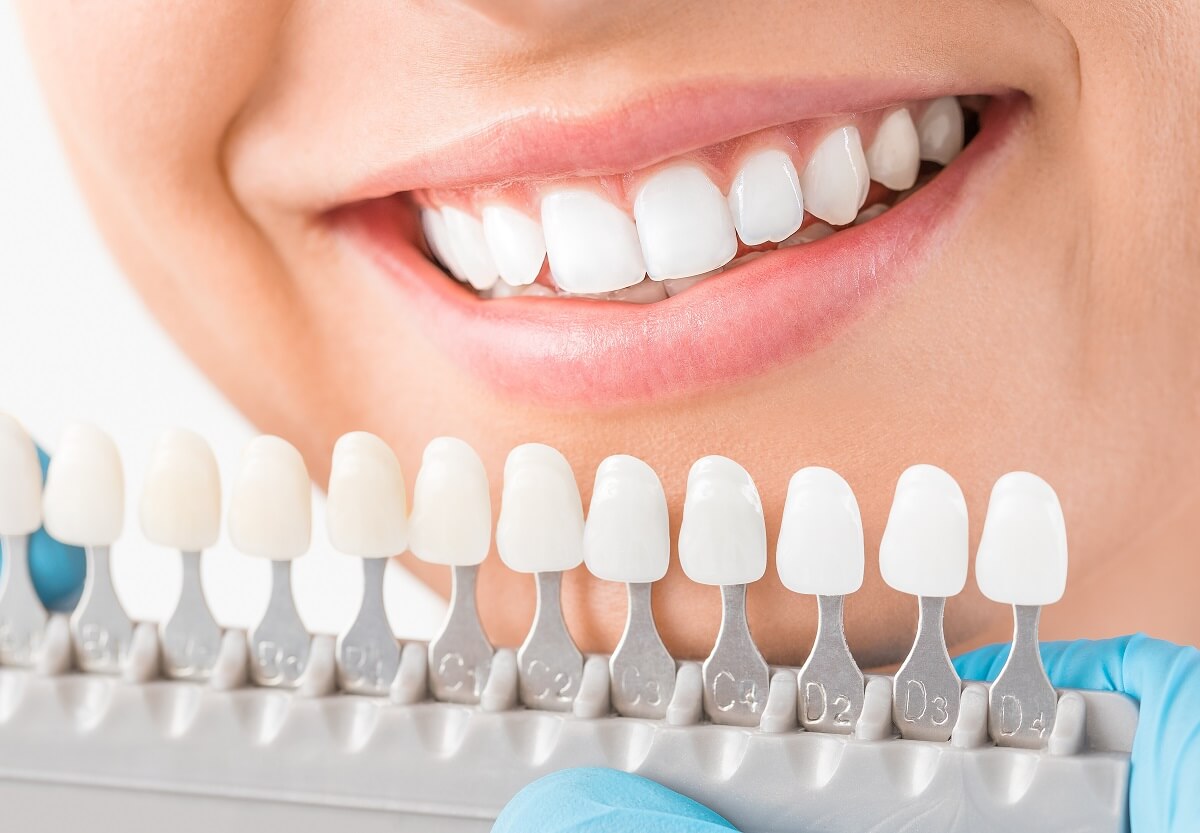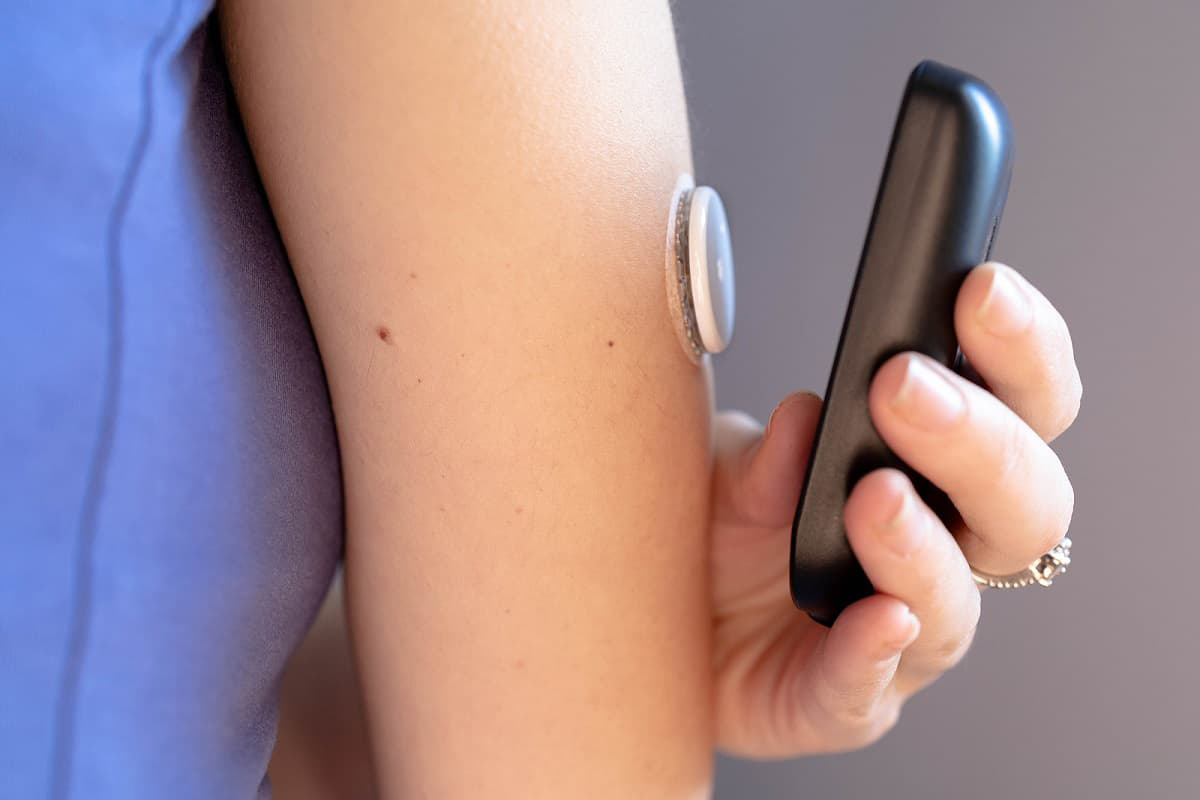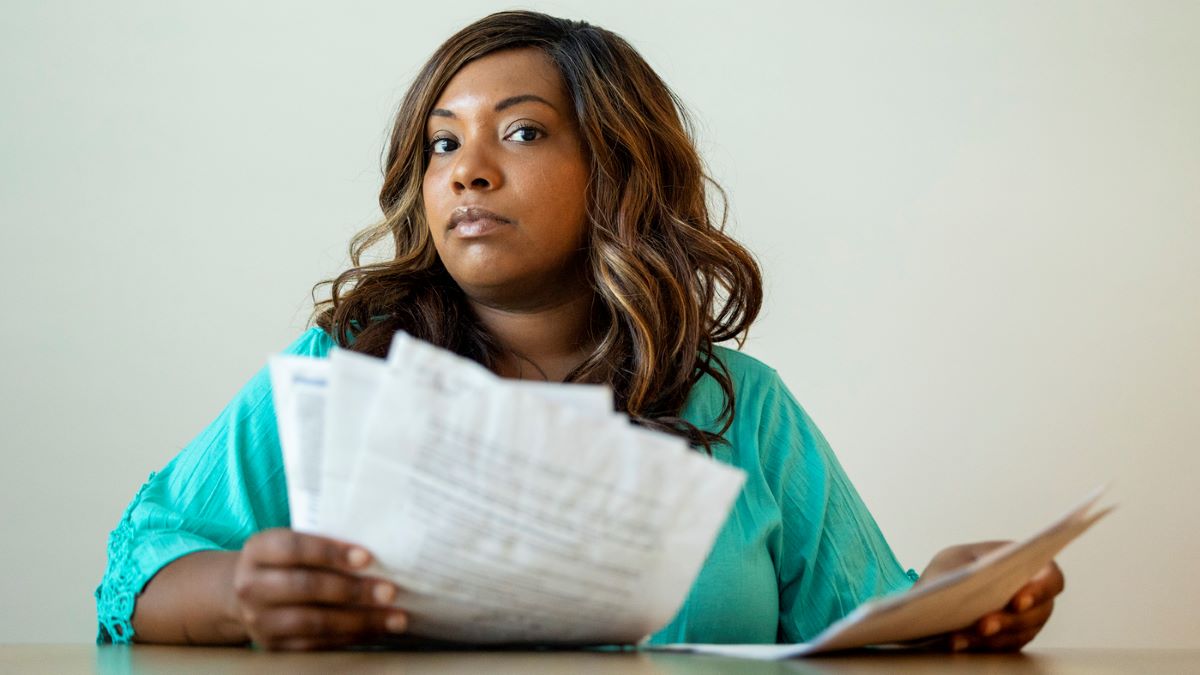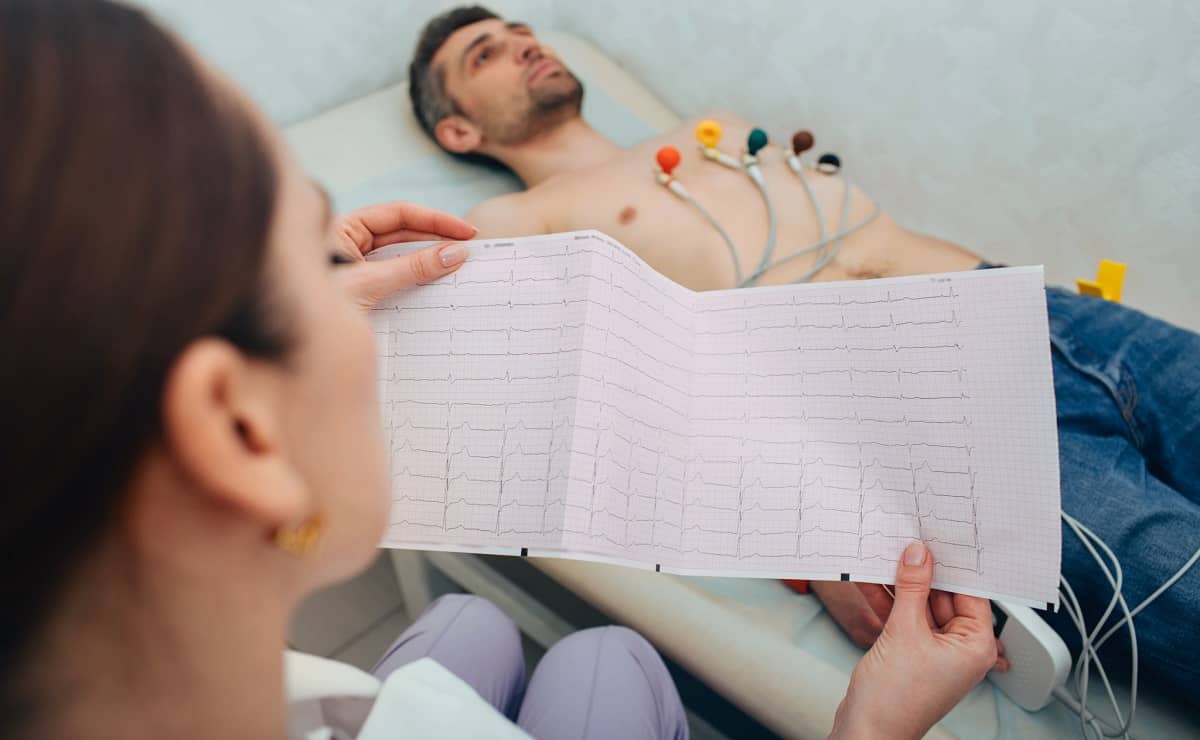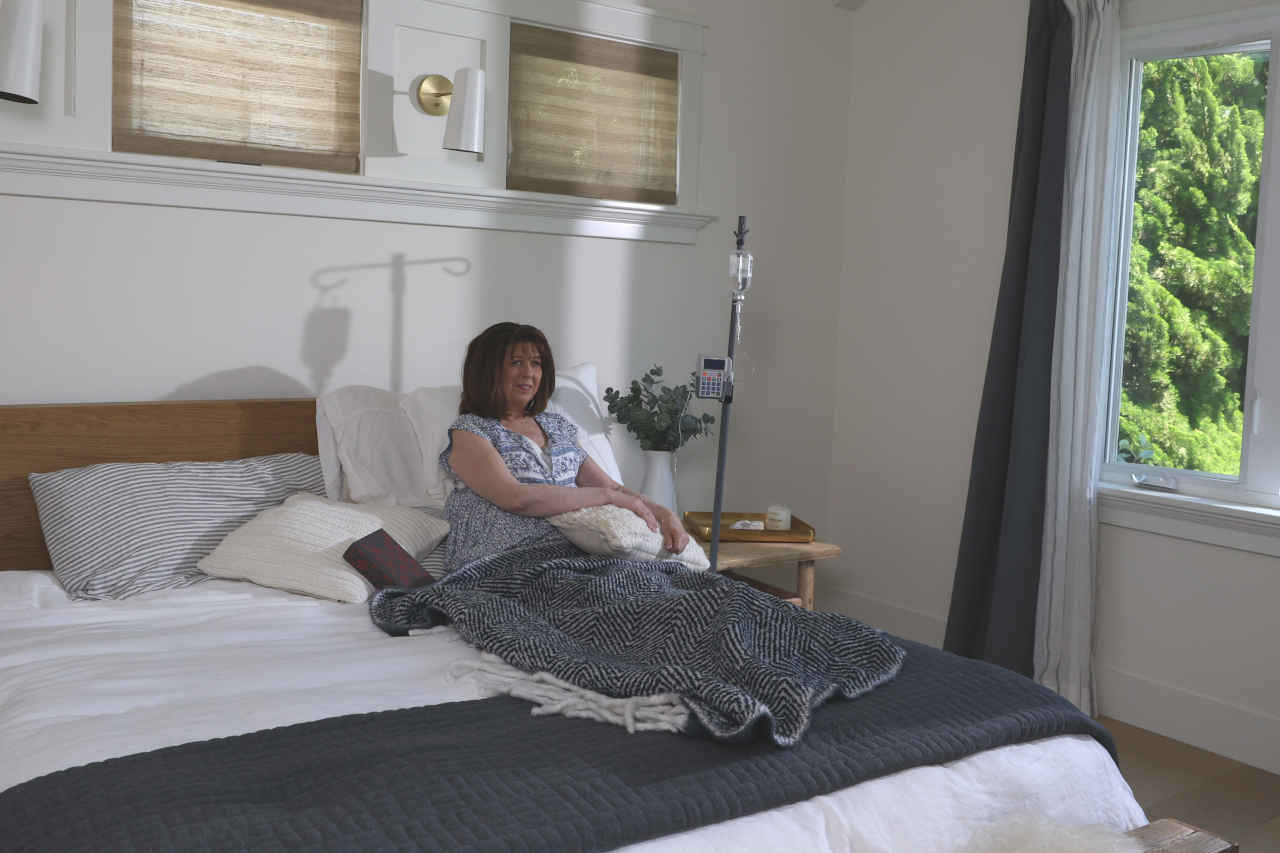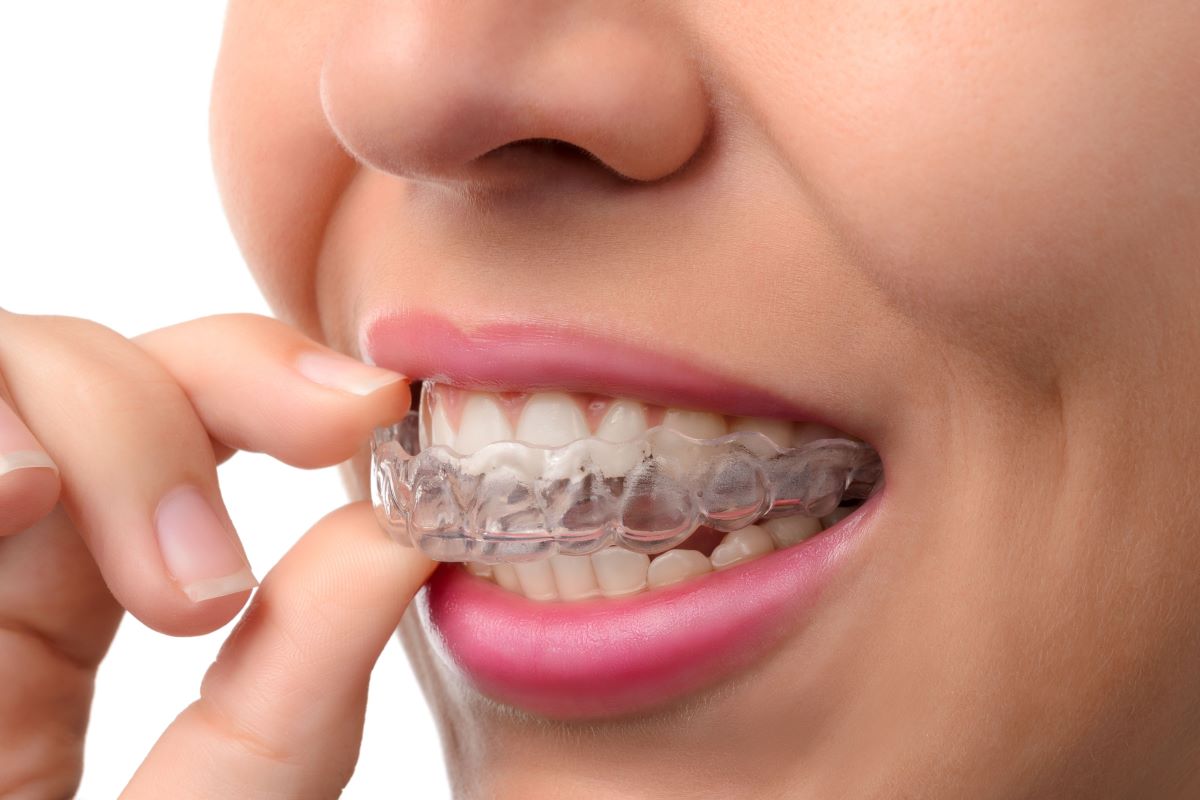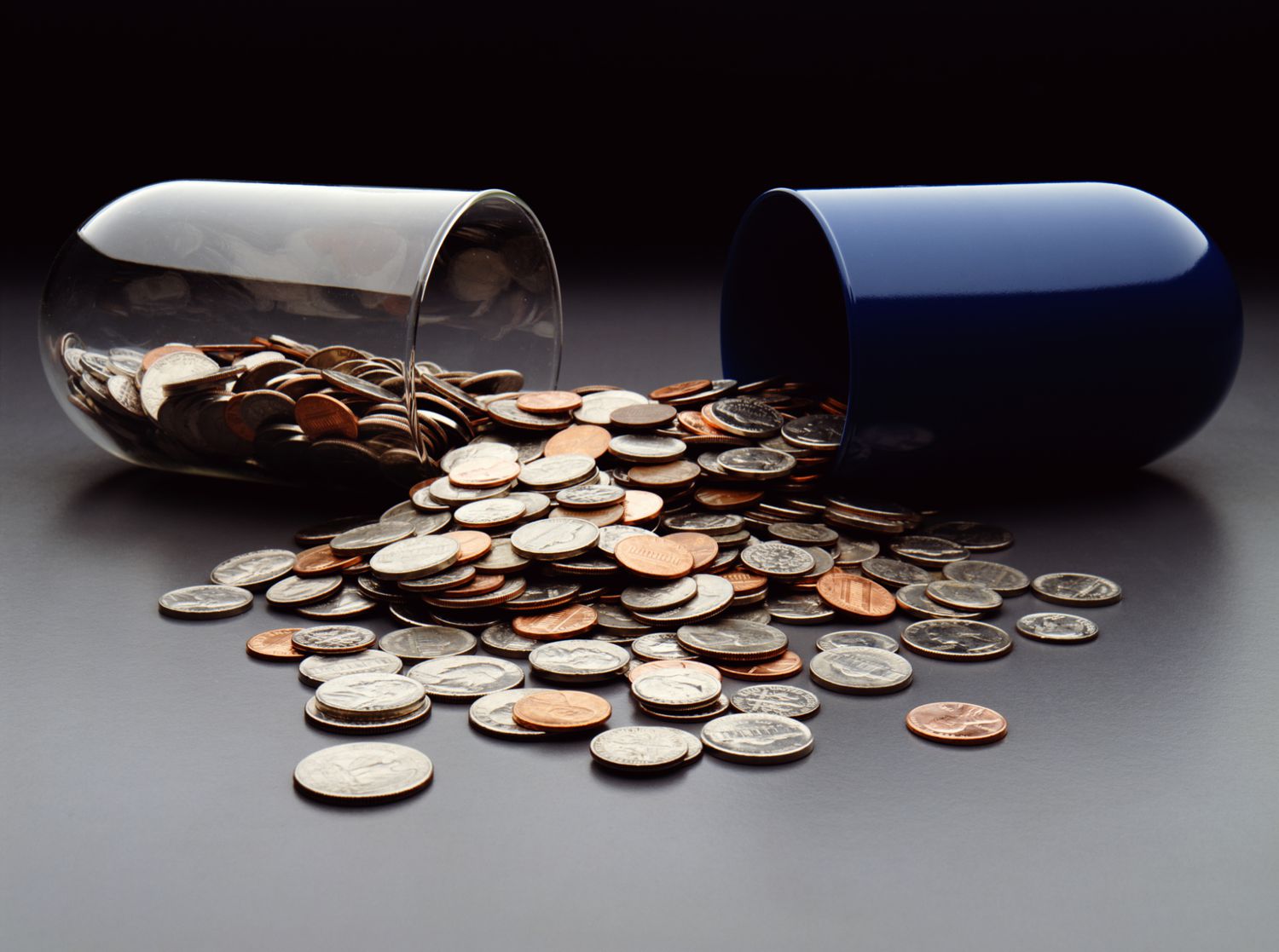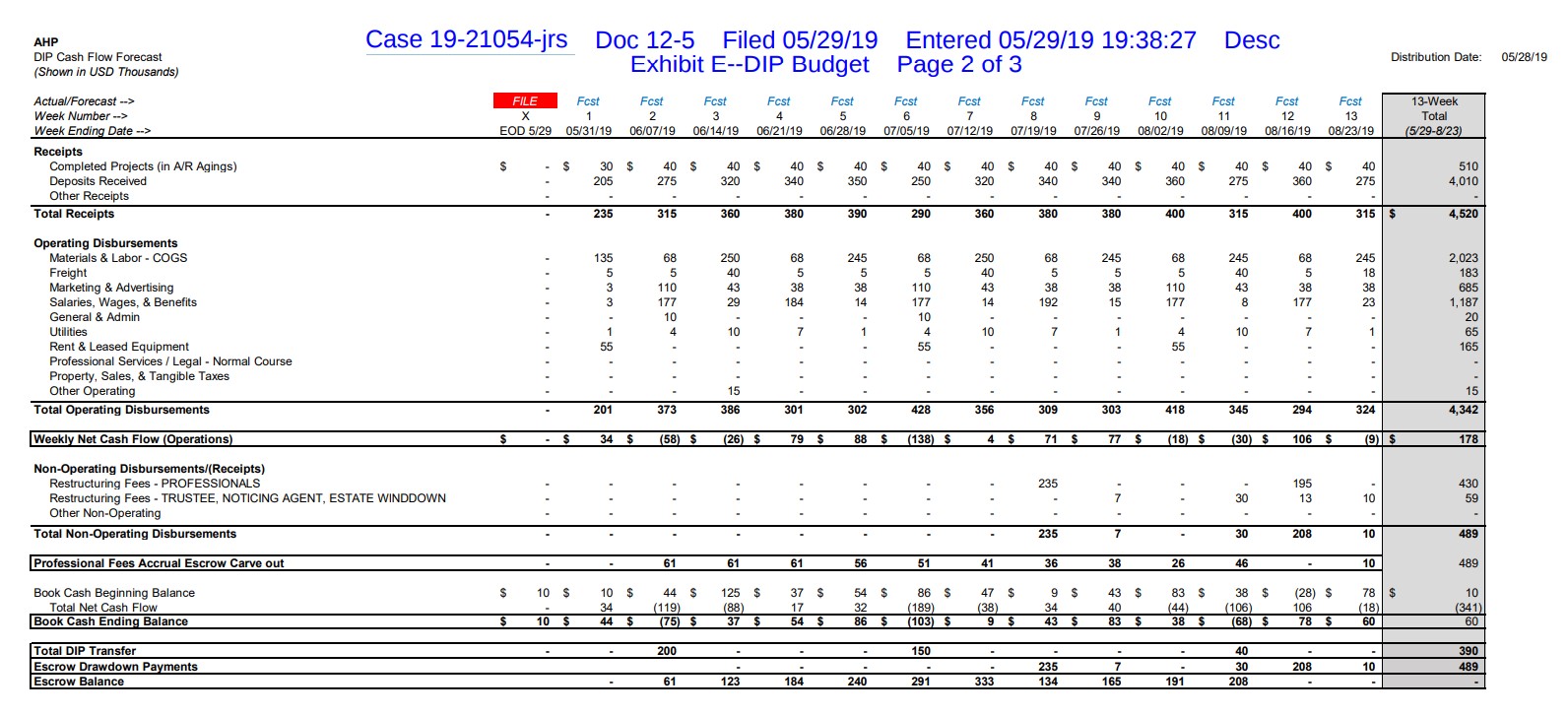Home>Finance>How Much Does A Breast Biopsy Cost Without Insurance
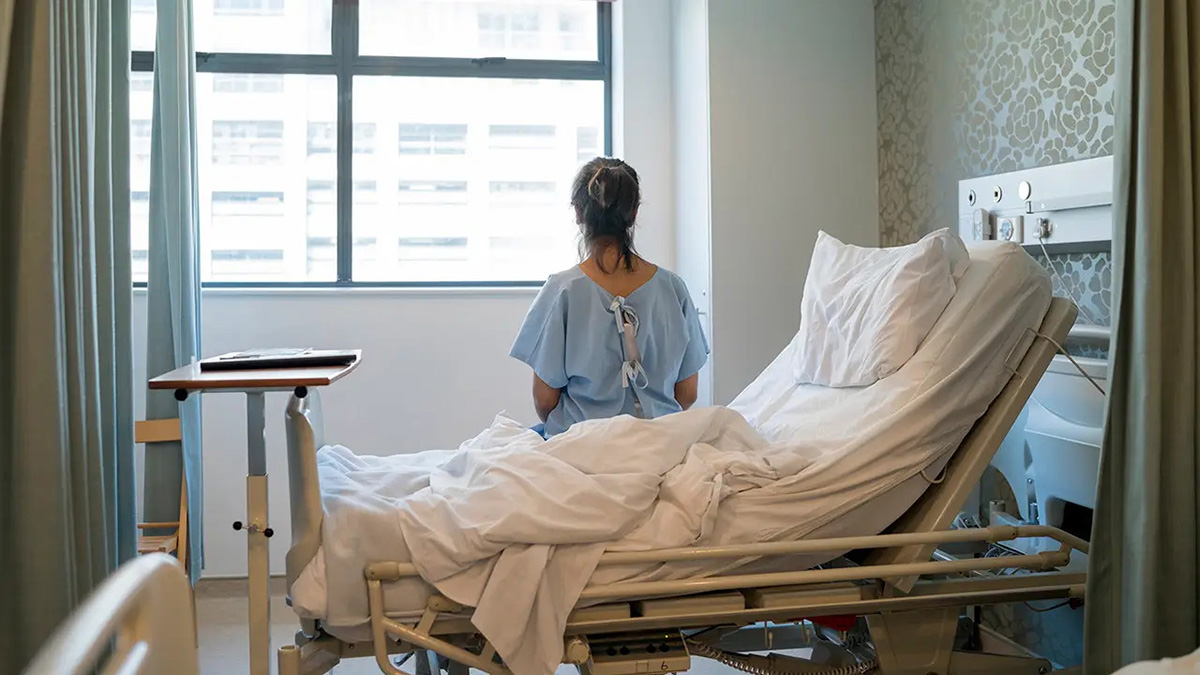

Finance
How Much Does A Breast Biopsy Cost Without Insurance
Published: November 22, 2023
Looking for the cost of a breast biopsy without insurance? Discover finance options and find out how much you may need to budget for this medical procedure.
(Many of the links in this article redirect to a specific reviewed product. Your purchase of these products through affiliate links helps to generate commission for LiveWell, at no extra cost. Learn more)
Table of Contents
- Introduction
- What Is a Breast Biopsy?
- Why Might a Breast Biopsy Be Necessary?
- How Is a Breast Biopsy Done?
- How Much Does a Breast Biopsy Cost Without Insurance?
- Factors Affecting the Cost of a Breast Biopsy Without Insurance
- Average Costs of a Breast Biopsy Without Insurance
- Ways to Reduce the Cost of a Breast Biopsy Without Insurance
- Conclusion
Introduction
Welcome to the world of finance, where money matters and decisions can have a profound impact on our lives. Whether you are a seasoned investor, a budding entrepreneur, or simply someone trying to make financial sense of the world, understanding the intricacies of finance is crucial. From personal budgeting to complex investment strategies, the world of finance offers an array of opportunities and challenges.
In this article, we will delve into various aspects of finance, exploring topics such as budgeting, saving, investing, and more. We will discuss the importance of financial literacy and how it can empower individuals to make informed decisions about their money. Additionally, we will explore the different types of financial institutions and the services they offer, ranging from banks to credit unions and beyond.
Furthermore, we will discuss the fascinating world of investment, exploring different asset classes such as stocks, bonds, mutual funds, and real estate. We will shed light on the role of risk and return in investment decisions, helping you navigate the complex landscape of investing wisely.
No discussion of finance would be complete without addressing the importance of debt management. We will explore strategies for effectively managing debt, whether it be student loans, credit card debt, or mortgages. Additionally, we will discuss the pros and cons of various debt consolidation options, helping you make informed decisions about your financial future.
Lastly, we will tackle the concept of retirement planning. We will delve into topics such as the importance of starting early, the power of compounding interest, and the different types of retirement accounts available. Planning for retirement is a crucial aspect of financial well-being, and we will provide you with the tools and knowledge to make informed decisions about your future.
So, whether you are just starting your financial journey or looking to enhance your existing knowledge, this article is here to guide you. Join us as we navigate the world of finance, uncovering key insights and strategies that can help you achieve your financial goals.
What Is a Breast Biopsy?
A breast biopsy is a medical procedure performed to determine the presence of abnormal cells or tissue in the breast. It involves the removal of a small sample of breast tissue, which is then examined under a microscope to reach a definitive diagnosis. A breast biopsy is typically recommended when a suspicious lump, mass, or other abnormality is detected during a breast examination, mammogram, or ultrasound.
There are several types of breast biopsies, including:
- Core needle biopsy: This procedure involves using a hollow needle to extract tissue samples from the suspicious area in the breast.
- Excisional biopsy: In this procedure, the entire lump or abnormal area is surgically removed from the breast.
- Wire localization biopsy: This type of biopsy is performed when the abnormal area is difficult to locate. A thin wire is inserted into the breast to mark the location of the abnormal tissue, which is then surgically removed.
- Ultrasound-guided biopsy: This procedure utilizes ultrasound imaging to precisely guide the needle to the abnormal tissue in the breast.
- MRI-guided biopsy: In cases where an abnormality is only visible on magnetic resonance imaging (MRI) scans, this type of biopsy is performed with the guidance of MRI imaging.
The choice of biopsy method depends on various factors, including the size, location, and nature of the suspicious area, as well as the individual patient’s medical history.
It is important to note that a breast biopsy is not always indicative of breast cancer. In many cases, the biopsy results may reveal benign (non-cancerous) conditions such as fibroadenomas or cysts. However, in cases where cancer cells are detected, the biopsy results provide crucial information for determining the stage and appropriate treatment plan for breast cancer.
Overall, a breast biopsy plays a vital role in the accurate diagnosis of breast abnormalities and is a crucial step in the evaluation and management of breast health concerns.
Why Might a Breast Biopsy Be Necessary?
A breast biopsy may be necessary in various situations to further evaluate a suspicious area or abnormality detected in the breast. While not all breast abnormalities are cancerous, a biopsy is important for determining the nature and potential risks associated with the abnormality. Here are some common reasons why a breast biopsy might be recommended:
- Breast lump or mass: The presence of a new lump or mass in the breast is a common reason for a biopsy. While many lumps are benign, a biopsy is needed to rule out the possibility of breast cancer.
- Abnormal mammogram or ultrasound: If imaging tests such as mammograms or ultrasounds show an abnormality or suspicious area in the breast, a biopsy may be necessary to determine if cancer cells are present.
- Changes in breast appearance: Any changes in the size, shape, or appearance of the breast, including thickening, dimpling, or skin changes, may warrant further investigation through a biopsy.
- Nipple discharge: If a nipple discharges fluid, especially if it is bloody, a biopsy may be recommended to determine the cause of the discharge and rule out any underlying issues.
- Previous cancer history: Individuals with a personal history of breast cancer may undergo a biopsy to monitor for any recurrence or new abnormalities in the breast.
- Genetic predisposition: If an individual has a family history of breast cancer or carries certain genetic mutations (such as BRCA1 or BRCA2), a biopsy may be necessary to assess the risk and detect any potential cancerous changes.
It is important to note that the decision to perform a breast biopsy is based on careful evaluation by a healthcare professional, considering various factors such as the characteristics of the abnormality, the individual’s medical history, and other diagnostic test results. A biopsy allows for a definitive diagnosis and helps guide appropriate treatment decisions if cancer or other concerning conditions are detected.
While the idea of undergoing a breast biopsy may cause anxiety or fear, it is important to remember that early detection is key to successful treatment outcomes. Through proper evaluation and timely intervention, a breast biopsy can provide valuable information to ensure appropriate medical management and peace of mind for individuals facing breast health concerns.
How Is a Breast Biopsy Done?
A breast biopsy is a procedure that involves the collection of a small sample of tissue from the breast for further examination. The specific method used for the biopsy may vary depending on various factors, including the size and location of the abnormality, as well as the individual’s medical history. Here is a general overview of how a breast biopsy is typically performed:
- Preparation: Before the biopsy, a healthcare professional will discuss the procedure with you and answer any questions or concerns you may have. They may ask about your medical history and any medications you are taking, as some medications may need to be temporarily paused before the procedure. You may be asked to change into a gown and lie on your back or side, depending on the position needed for the biopsy.
- Local anesthesia: To ensure comfort during the procedure, a local anesthetic will be administered to numb the area where the biopsy will be performed. You may feel a slight pinch or stinging sensation when the anesthesia is injected, but it should quickly numb the area.
- Tissue collection: Once the area is numb, the healthcare professional will proceed with the tissue collection. The specific method used will depend on the type of biopsy being performed. For example, in a core needle biopsy, a hollow needle will be inserted into the breast to remove several tissue samples from the abnormal area. If an excisional biopsy is being performed, an incision will be made to remove the entire lump or abnormal tissue. Throughout the procedure, you may feel some pressure or slight discomfort, but it should not be excessively painful.
- Sample labeling and analysis: After the tissue samples are collected, they will be labeled and sent to a laboratory for analysis. The samples will be examined under a microscope by a pathologist, who will look for any abnormalities or signs of cancer.
- Post-procedure care: Following the biopsy, a bandage or adhesive strips will be applied to the biopsy site. You may be instructed to avoid strenuous activities, heavy lifting, or vigorous exercise for a certain period of time to minimize discomfort and promote healing. It is important to follow any specific post-procedure care instructions provided by your healthcare professional.
The duration of a breast biopsy can vary, depending on the complexity of the procedure and the type of biopsy being performed. In most cases, the procedure can be completed within 30 minutes to an hour.
It is normal to experience some soreness, bruising, or swelling at the biopsy site after the procedure. Over-the-counter pain medications can help alleviate any discomfort. It is important to monitor the site for any signs of infection, such as increasing pain, redness, warmth, or drainage, and to contact your healthcare professional if you have any concerns.
Remember, each person’s experience and recovery from a breast biopsy may differ, so it is important to communicate with your healthcare professional throughout the process and follow their guidance for optimal care and recovery.
How Much Does a Breast Biopsy Cost Without Insurance?
Without insurance coverage, the cost of a breast biopsy can vary depending on several factors, such as the type of biopsy performed, the location of the procedure, and the healthcare provider or facility chosen. It is important to note that the cost can also vary significantly between different regions and countries. Here is a general overview of the potential costs involved in a breast biopsy without insurance:
- Procedure fees: The fees associated with the biopsy procedure itself can range from a few hundred to several thousand dollars. This includes the cost of the healthcare provider’s services, the use of medical equipment, and the sterile supplies necessary for the procedure.
- Facility fees: If the biopsy is performed in a hospital or outpatient surgical center, there may be additional facility fees. These charges cover the use of the facility and any associated services, such as anesthesia or nursing care. The facility fees can significantly contribute to the overall cost of the biopsy.
- Diagnostic testing: In some cases, additional diagnostic tests may be required to analyze the tissue samples collected during the biopsy. The cost of these tests, such as pathology analysis or genetic testing, can vary depending on the complexity of the analysis and the laboratory fees involved.
It is important to keep in mind that the costs mentioned above are general estimates and can vary widely. The final cost will depend on factors such as the geographical location, the healthcare provider’s fees, the specific services provided, and any financial assistance or discounts available. It is advisable to consult with the healthcare provider or facility beforehand to obtain an accurate estimate of the costs involved.
If you do not have insurance and are concerned about the cost of a breast biopsy, it is worth exploring potential options for financial assistance or discounts. Some healthcare providers or facilities offer discounted rates for uninsured individuals or have programs in place to assist with the cost of medical procedures. It is recommended to inquire about these options and discuss any financial concerns or limitations with the healthcare provider’s billing department.
Furthermore, it is important to consider the potential long-term costs of not undergoing a breast biopsy if recommended by a healthcare professional. Early detection and timely treatment play a crucial role in the successful management of breast health issues. Therefore, weighing the potential costs against the potential benefits of a biopsy is essential for making informed decisions about your healthcare.
Factors Affecting the Cost of a Breast Biopsy Without Insurance
Several factors can influence the cost of a breast biopsy when you do not have insurance coverage. Understanding these factors can help you prepare for the potential financial implications. Here are some key factors that can affect the cost of a breast biopsy without insurance:
- Type of biopsy: The specific type of biopsy performed can impact the cost. Different biopsy methods, such as core needle biopsy or excisional biopsy, have varying levels of complexity and resource requirements, which can affect the overall cost.
- Healthcare provider fees: The fees charged by healthcare providers can vary significantly. Factors such as their experience, expertise, and location can influence the cost. Specialists or renowned healthcare providers may have higher fees compared to general practitioners or less well-known providers.
- Facility fees: If the biopsy is performed in a hospital or outpatient surgical center, there may be facility fees associated with the use of the facility, equipment, and additional services. Different facilities may have different pricing structures, and the fees can vary based on geographical location.
- Diagnostic testing: Depending on the biopsy results, additional diagnostic tests may be required, such as pathology analysis or genetic testing. These tests can incur additional costs, particularly if performed by specialized laboratories or require advanced techniques.
- Geographical location: The cost of healthcare services can vary significantly based on the region, city, or even neighborhood where you live. Areas with higher cost of living or limited healthcare provider options may result in higher biopsy costs.
- Unforeseen complications: In some cases, unforeseen complications may arise during or after the biopsy procedure, which may lead to additional medical interventions or follow-up care. These unexpected complications can increase the overall cost of the biopsy.
It is important to keep in mind that these factors interact with each other and can vary on a case-by-case basis. Therefore, the total cost of a breast biopsy without insurance can greatly differ depending on the specific circumstances surrounding your procedure. Consulting with healthcare providers and facilities to obtain cost estimates and exploring potential financial assistance or discounts can help you navigate the financial aspects of the biopsy.
Before committing to a specific healthcare provider or facility, it is essential to inquire about the total cost of the biopsy, including all associated fees and potential testing expenses. Clear communication with the healthcare provider’s billing department will allow you to better understand the financial commitment involved and make informed decisions about your healthcare.
Average Costs of a Breast Biopsy Without Insurance
When considering the cost of a breast biopsy without insurance coverage, it is important to note that the expenses can vary significantly depending on various factors, as mentioned earlier. However, here is a general overview of the average costs associated with a breast biopsy without insurance:
- Procedure fees: The cost of the actual biopsy procedure itself can range from $500 to $3,000 or more, depending on the specific type of biopsy performed and the healthcare provider’s fees. Less invasive biopsies, such as a core needle biopsy, tend to be less expensive compared to surgical biopsies like an excisional biopsy.
- Facility fees: If the biopsy is conducted in a hospital or outpatient surgical center, there may be additional facility fees to consider. These fees can range from a few hundred to several thousand dollars, depending on the location and services provided by the facility.
- Diagnostic testing: The cost of diagnostic testing, such as pathology analysis or genetic testing, can also contribute to the overall expense. These tests ensure a comprehensive evaluation of the tissue samples collected during the biopsy. The cost of these tests can vary widely, ranging from a few hundred to several thousand dollars.
It is important to note that these figures are approximate and can vary based on factors such as geographical location, the specific healthcare provider or facility chosen, and any financial assistance or discounts available. It is advisable to consult with healthcare providers and facilities beforehand to obtain accurate estimates for the costs associated with a breast biopsy.
Additionally, unforeseen circumstances or complications during or after the procedure can increase the overall cost. It is essential to inquire about the potential for additional fees related to complications or follow-up care, should they arise.
While the prospect of paying for a breast biopsy without insurance may seem overwhelming, it is important to remember that there are resources available to help manage these expenses. Some healthcare providers offer discounted rates or payment plans for uninsured individuals. Additionally, there may be programs or organizations that provide financial assistance to eligible patients seeking medical procedures.
Exploring all available options and discussing your financial situation with healthcare providers and financial counselors can help you navigate the costs associated with a breast biopsy without insurance. Remember, prioritizing your health and well-being is crucial, and there are resources out there to support you in your healthcare journey.
Ways to Reduce the Cost of a Breast Biopsy Without Insurance
While the cost of a breast biopsy without insurance coverage can be a significant financial burden, there are several strategies you can employ to help reduce the overall expense. Consider the following options to help mitigate the costs associated with a breast biopsy:
- Shop around for affordable healthcare providers: Research and compare different healthcare providers and facilities to find the most cost-effective options for your biopsy. Inquire about their fees, facility costs, and any available discounts or financial assistance programs.
- Ask for cash discounts or self-pay rates: Some healthcare providers offer discounted rates for individuals paying upfront or without insurance. Inquire about self-pay rates or cash discounts to potentially secure a lower cost for the biopsy.
- Explore local assistance programs: Inquire with local hospitals, clinics, or community organizations about financial assistance programs. These programs may offer reduced-cost or free services based on income eligibility or other specified criteria.
- Consider outpatient surgery centers: Opting for an outpatient surgery center instead of a hospital can often result in lower facility fees. These centers are specifically designed for minor procedures and can offer more affordable options for a breast biopsy.
- Discuss payment plans and negotiate: If the cost of the biopsy is overwhelming, talk to the healthcare provider’s billing department about the possibility of setting up a payment plan. Many providers are willing to work with patients to establish manageable payment arrangements. Additionally, consider negotiating the fees or discussing any financial hardships you may be experiencing.
- Seek financial assistance: Look into charitable organizations or foundations that provide financial assistance for medical procedures. These organizations may offer grants or aid to individuals in need of financial support for essential healthcare services.
- Consider clinical trials or research studies: Some research institutions or clinical trial programs may offer free or reduced-cost biopsy procedures as part of their studies. Participation in these programs can provide access to necessary care while potentially reducing the financial burden.
It is important to be proactive in discussing your financial situation and exploring these options with healthcare providers and facilities before the biopsy. Many providers understand the financial challenges patients face and are willing to work with you to find solutions that meet your needs.
Remember that prioritizing your health is essential, and there are resources available to help manage the costs associated with a breast biopsy without insurance. By being proactive, exploring available options, and advocating for yourself, you can take steps towards reducing the financial burden and accessing the necessary care.
Conclusion
A breast biopsy is an important medical procedure used to evaluate abnormal breast tissue and determine the presence of potential concerns, such as breast cancer. While the cost of a breast biopsy without insurance coverage can be a major financial concern, there are ways to navigate the expenses and ensure access to necessary healthcare services.
Understanding the factors that influence the cost of a breast biopsy, such as the type of biopsy, healthcare provider fees, facility fees, and diagnostic testing, can help you prepare for the financial implications. Additionally, exploring options to reduce the cost, such as researching affordable healthcare providers, asking for cash discounts or self-pay rates, seeking financial assistance programs, and negotiating payment plans, can help alleviate the burden. Participating in clinical trials or research studies can also be a viable option for individuals in need of reduced-cost or free biopsy procedures.
It is important to prioritize your health and advocate for yourself when facing potential breast health concerns. Communicate openly with healthcare providers, discuss your financial situation, and inquire about available resources or financial assistance programs. Remember, healthcare providers understand the financial challenges patients may face and are often willing to work with you to find affordable solutions.
Ultimately, the cost of a breast biopsy without insurance should not discourage individuals from seeking necessary medical care. Early detection and timely intervention play a crucial role in managing breast health issues, and there are resources available to support you on your healthcare journey. By being proactive and exploring options to reduce costs, you can ensure access to quality care and take steps towards maintaining your overall well-being.

